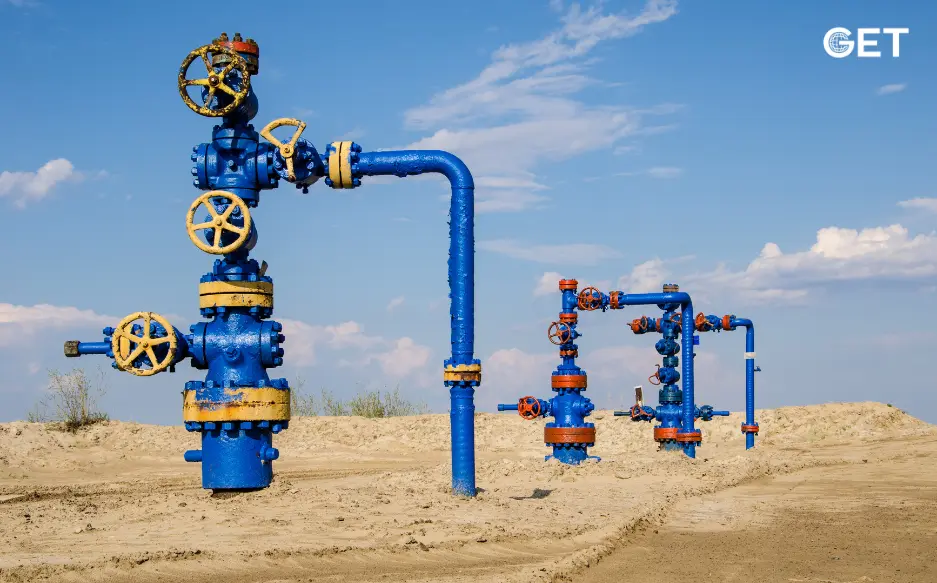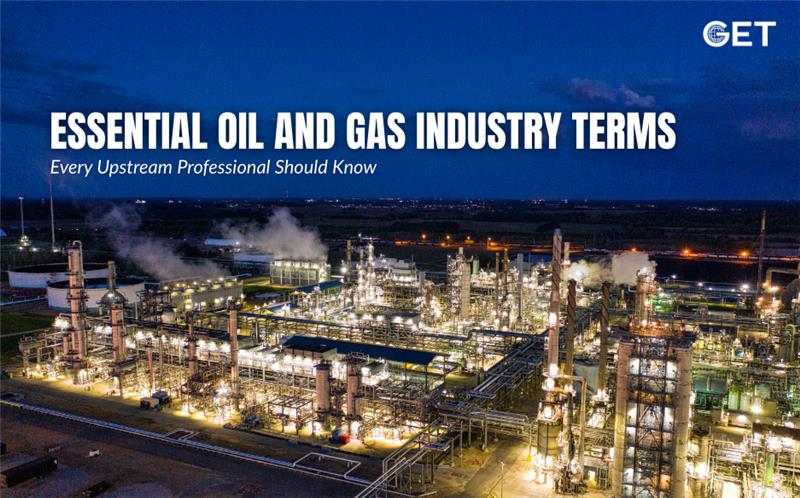
The oil and gas industry plays a crucial role in powering the global economy. With its vast complexity and unique terminology, understanding the industry can be a daunting task. In this blog post, we will explore 5 key terms generally associated with the oil and gas industry. An understanding of these terms would better equip you to understand the discussions surrounding this vital sector.
Let’s see top 5 key terms in oil and gas industry:-
The upstream sector of the oil and gas industry refers to activities involved in the exploration, appraisal, and production of hydrocarbon reserves. It encompasses the processes of identifying potential oil and gas fields, drilling exploration wells, and extracting the resources from the ground. Upstream operations also involve activities such as well testing, reservoir modelling, and implementing technologies to enhance production efficiency. Companies engaged in upstream activities are often referred to as exploration and production (E&P) companies.
Also known as fracking, hydraulic fracturing is a technique used in the oil and gas industry to extract natural gas and oil from deep underground reservoirs. It involves injecting a mixture of water, sand, and chemicals at high pressure into a wellbore to create fractures in the rock formation. These fractures allow the trapped hydrocarbons to flow more freely and be extracted from the surface. Hydraulic fracturing has significantly increased the production of natural gas and oil in many parts of the world, but it is also a controversial process due to its potential environmental and health impacts, such as groundwater contamination and seismic activity.
A drilling rig is a complex machine used in the exploration and production of oil, gas, and water wells. It is designed to create boreholes in the earth’s surface and extract subsurface resources. Drilling rigs can vary in size and configuration, ranging from small portable units used for shallow water wells to massive offshore platforms capable of drilling in deepwater environments. They consist of various components, such as a drill bit, a drilling mud system, a hoisting system, and rotating equipment. Drilling rigs play a vital role in the energy industry by enabling the extraction of valuable resources necessary for various sectors of the economy.
A development well is a type of well drilled in an established oil or gas field with the purpose of further exploiting the known reserves. These wells are typically drilled after the initial discovery well has been drilled and proven the presence of hydrocarbons in the reservoir. Development wells are intended to increase production and enhance the recovery of oil or gas by accessing additional sections of the reservoir or by using enhanced oil recovery techniques. They are strategically located based on geological and engineering data to maximize the extraction of resources from the field. Development wells are crucial for the ongoing operation and profitability of oil and gas fields.
Liquefied natural gas (LNG) is natural gas that has been cooled to a very low temperature (-160 degrees Celsius or -260 degrees Fahrenheit) to convert it into a liquid state. The liquefaction process reduces the volume of natural gas by about 600 times, making it easier and more cost-effective to transport and store. LNG is primarily composed of methane and is odorless, colorless, and non-toxic. It is typically transported in specialized cryogenic tanks on ships, trucks, or in insulated pipelines. Liquefied natural gas has become an important energy source, enabling the global trade of natural gas and facilitating access to remote markets. It is used for various purposes, including electricity generation, heating, and as a fuel in transportation.
Also Read: Outsourcing Strategies in the Upstream Oil and Gas Industry
The oil and gas industry operates within a complex web of terminology and concepts. By understanding key terms such as upstream, hydraulic fracturing, drilling rig, development well, and liquefied natural gas, you will gain more clarity around the discussions and developments within the industry.
As the energy landscape evolves, staying informed about these terms will enable you to comprehend the challenges, opportunities, and future trends shaping the global oil and gas sector. It is here that GET Global Group can help. As a leading service provider to the upstream oil and gas industry, we deliver extensive onsite and offsite training programmes ranging from beginners to executives, enabling oil and gas companies to close skill gaps and enable their workforce to achieve higher levels of productivity. Our beginners’ programmes are intended to introduce aspiring professionals to the key terms associated with the sector and the various exciting career opportunities that it provides.
Also Read: Importance of global expansion for Oil & Gas Companies

By Get global | December 11, 2025

By Get global | December 5, 2025
Turkey’s ambitions in the energy sector have taken a significant step forward as Turkish Petroleum (TPAO) ramps up drilling at its latest Black Sea discovery. The find is considered one of the most promising additions to the region’s portfolio, reshaping the conversation around Turkish gas exploration, self-sufficiency, and the future […]

By Get global | November 27, 2025
The upstream oil and gas industry is thrilling, quick-moving, and rich with opportunities—but let’s face it, it also has a lot of technical language. If you are a newcomer to the industry, changing jobs, or just wanting to enhance your knowledge about the industry, mastering the right terms can facilitate […]

By Get global | November 24, 2025

By Get global | November 17, 2025
Anyone who has worked in the UAE energy sector will tell you the same thing. The industry here keeps moving. Every year brings new drilling activity, stronger digital adoption, and a clearer shift toward cleaner and more efficient operations. Because of this, companies are looking for a different mix of […]